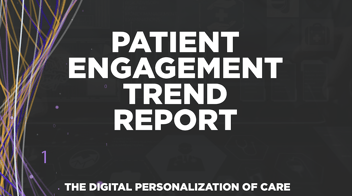A new report from NRC Health is seeking to answer the question about whether you can move the needle on HCAHPS.
According the Executive Summary, “The HCAHPS (Hospital Consumer Assessment of Healthcare Providers and Systems) survey is the national standard for collecting patients’ perceptions of their hospital experience, a relatively small but hugely important and expensive aspect of the overall healthcare picture. Early on, HCAHPS served as a focusing mechanism that sparked considerable improvement by positioning patient experience as a key element of overall quality. Despite the time, energy, and money devoted to HCAHPS at a national level, scores plateaued around 2017 – years before the onset of the pandemic – perhaps because many organizations had started to focus on scores more than the behaviors and outcomes that scores were meant to reflect. It’s time to take a broader view of HCAHPS through the lens of elevating experience in everyday practice.”
There are six key takeaways from the report, which are summarized here:
- Most surveys are returned more than a month after discharge. The scores decrease as time passes, which may be because people with negative experiences take longer to respond.
- A combination of real-time experience gathering and HCAHPS makes the most sense for getting more accurate information and diverse responses.
- In terms of scores, nationally publicly-reported data indicates that the pandemic set HCAHPS back almost a decade.
- While most organizations have seen big pandemic-associated hits to HCAHPS, about 26% (757 of 2,937) have demonstrated measurable improvement post-Covid.
- In terms of tactics, the report data shows that cultivating comments, engaging in purposeful Nurse Leader Rounding, automating discharge calls, and accelerating service recovery are direct paths to marked improvement.
- Actively demonstrating that patient experience is a priority is the common factor in success stories.
It’s important to remember that HCAHPS is more than just a post-visit survey. According to the survey report, “Ten HCAHPS measures are publicly reported on the Centers for Medicare & Medicaid Services (CMS) Care Compare website. Except for ‘Willingness to recommend’, these measures also compose the CMS Person & Community Engagement Domain, which factors into the Hospital Value-Based Purchasing program to incentivize both achievement and improvement. Accordingly, HCAHPS is important in terms of gathering and acting upon patient feedback as well as organizational reputation and financial stability.”
However, the report acknowledges that there are issues with HCAHPS even as CMS tries to make it more inclusive and useful. As noted in the takeaways, it has a narrow scope, responses are often delayed, and they can lack the diversity you get with real-time feedback.
That doesn’t mean the feedback gathered isn’t useful. Many Gozio clients have noted that they sought out digital wayfinding to address a common issue in their HCAHPS surveys. Being able to identify key issues, address them, and then track the progress is an important use for HCAHPS.
You can read about a couple of those organizations in these case studies:
University of Tennessee Medical Center
In the full report, you can get more insights on how to gather better feedback and act on it. There are also three success stories that provide additional insights. It’s a worth a read.


